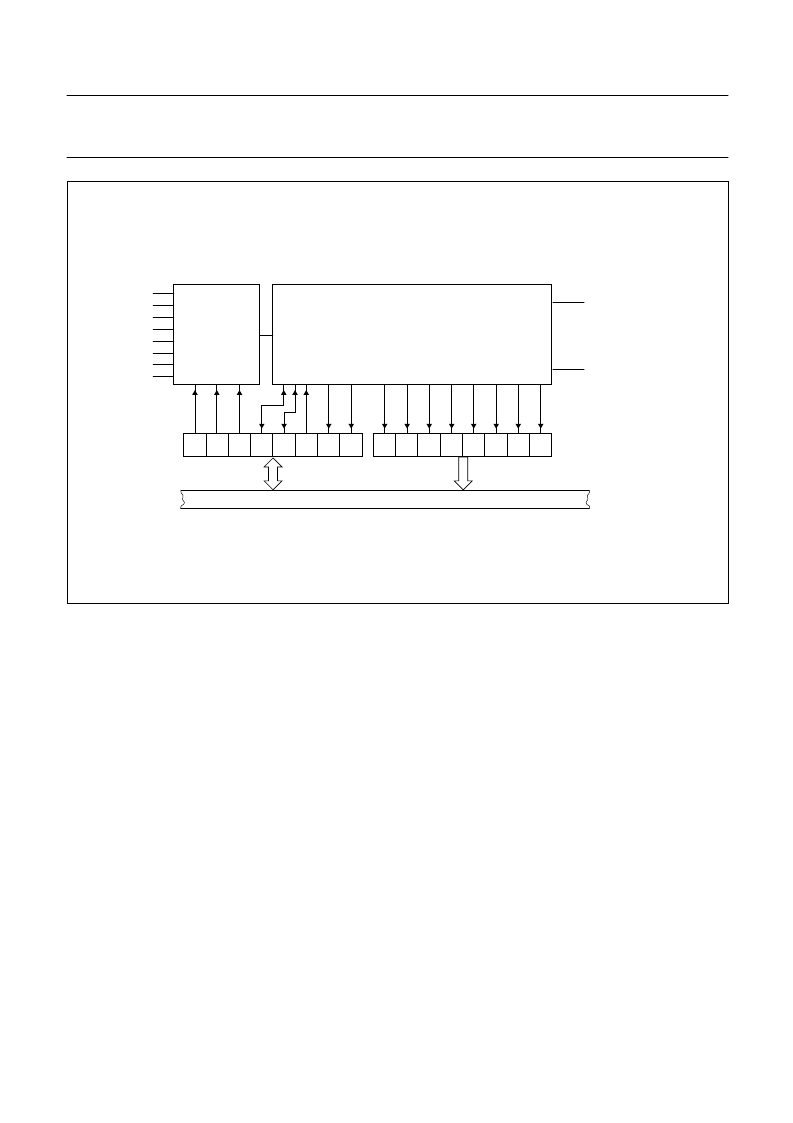- 您現(xiàn)在的位置:買賣IC網(wǎng) > PDF目錄369945 > P8XC591 (NXP Semiconductors N.V.) HiRel FPGA, Low-Power 1.0?? CMOS Technology PDF資料下載
參數(shù)資料
| 型號(hào): | P8XC591 |
| 廠商: | NXP Semiconductors N.V. |
| 英文描述: | HiRel FPGA, Low-Power 1.0?? CMOS Technology |
| 中文描述: | 單芯片8 - CAN控制器位微控制器 |
| 文件頁(yè)數(shù): | 125/160頁(yè) |
| 文件大小: | 601K |
| 代理商: | P8XC591 |
第1頁(yè)第2頁(yè)第3頁(yè)第4頁(yè)第5頁(yè)第6頁(yè)第7頁(yè)第8頁(yè)第9頁(yè)第10頁(yè)第11頁(yè)第12頁(yè)第13頁(yè)第14頁(yè)第15頁(yè)第16頁(yè)第17頁(yè)第18頁(yè)第19頁(yè)第20頁(yè)第21頁(yè)第22頁(yè)第23頁(yè)第24頁(yè)第25頁(yè)第26頁(yè)第27頁(yè)第28頁(yè)第29頁(yè)第30頁(yè)第31頁(yè)第32頁(yè)第33頁(yè)第34頁(yè)第35頁(yè)第36頁(yè)第37頁(yè)第38頁(yè)第39頁(yè)第40頁(yè)第41頁(yè)第42頁(yè)第43頁(yè)第44頁(yè)第45頁(yè)第46頁(yè)第47頁(yè)第48頁(yè)第49頁(yè)第50頁(yè)第51頁(yè)第52頁(yè)第53頁(yè)第54頁(yè)第55頁(yè)第56頁(yè)第57頁(yè)第58頁(yè)第59頁(yè)第60頁(yè)第61頁(yè)第62頁(yè)第63頁(yè)第64頁(yè)第65頁(yè)第66頁(yè)第67頁(yè)第68頁(yè)第69頁(yè)第70頁(yè)第71頁(yè)第72頁(yè)第73頁(yè)第74頁(yè)第75頁(yè)第76頁(yè)第77頁(yè)第78頁(yè)第79頁(yè)第80頁(yè)第81頁(yè)第82頁(yè)第83頁(yè)第84頁(yè)第85頁(yè)第86頁(yè)第87頁(yè)第88頁(yè)第89頁(yè)第90頁(yè)第91頁(yè)第92頁(yè)第93頁(yè)第94頁(yè)第95頁(yè)第96頁(yè)第97頁(yè)第98頁(yè)第99頁(yè)第100頁(yè)第101頁(yè)第102頁(yè)第103頁(yè)第104頁(yè)第105頁(yè)第106頁(yè)第107頁(yè)第108頁(yè)第109頁(yè)第110頁(yè)第111頁(yè)第112頁(yè)第113頁(yè)第114頁(yè)第115頁(yè)第116頁(yè)第117頁(yè)第118頁(yè)第119頁(yè)第120頁(yè)第121頁(yè)第122頁(yè)第123頁(yè)第124頁(yè)當(dāng)前第125頁(yè)第126頁(yè)第127頁(yè)第128頁(yè)第129頁(yè)第130頁(yè)第131頁(yè)第132頁(yè)第133頁(yè)第134頁(yè)第135頁(yè)第136頁(yè)第137頁(yè)第138頁(yè)第139頁(yè)第140頁(yè)第141頁(yè)第142頁(yè)第143頁(yè)第144頁(yè)第145頁(yè)第146頁(yè)第147頁(yè)第148頁(yè)第149頁(yè)第150頁(yè)第151頁(yè)第152頁(yè)第153頁(yè)第154頁(yè)第155頁(yè)第156頁(yè)第157頁(yè)第158頁(yè)第159頁(yè)第160頁(yè)

2000 Jul 26
125
Philips Semiconductors
Preliminary Specification
Single-chip 8-bit microcontroller with CAN controller
P8xC591
Fig.48 Functional diagram of Analog Input Circuitry.
handbook, full pagewidth
MHI050
INTERNAL BUS
ANALOG INPUT
MULTIPLEXER
ADC0
ADC1
ADC2
ADC3
ADC4
ADC5
n.c.
n.c.
ANALOG GROUND
ANALOG REF.
+
1
2
0
4
5
6
7
3
10-BIT A/D CONVERTER
1
2
0
4
5
6
7
ADCH
ADCON
3
20.3
10-Bit Analog-to-Digital Conversion
Figure 48 shows the elements of a successive
approximation (SA) ADC. The ADC contains a DAC which
converts of a successive approximation register to a
voltage (VDAC) which is compared to the analog input
voltage (V
IN
). The output of the comparator is fed to the
successive approximation control logic which controls the
successive approximation register. A conversion is
initiated by setting ADCS in ADCON register. ADCS can
bet set by software only.
The software start mode is selected when control bit
ADCON.5 (ADEX) = 0. A conversion is then started by
setting control bit ADCON.3 (ADCS). The software start
mode is selected when ADCON.5 = 1, and a conversion
may be started by setting ADCON.3.
When a conversion is initiated, the conversion starts at the
beginning of the machine cycle which follows the
instruction that sets ADCS. ADCS is actually implemented
with two flip-flops; a command flip-flop which is affected by
set operations, and a status flag which is accessed during
read operations.
The next two machine cycles are used to initiate the
converter. At the end of the first cycle, the ADCS status
flag is set and a value of “1” will be returned if the ADCS
flag is read while the conversion is progress. Sampling of
the analog input commences at the end of the second
cycle.
During the next eight machine cycles, the voltage at the
previously selected pin of port 1 is sampled, and this input
voltageshouldbestableinordertoobtainausefulsample.
In any event, the input voltage slew rate must be less than
10 V/ms in order to prevent an undefined result.
The successive approximation control logic first sets the
most significant bit and clears all other bits in the
successive approximation register (10 0000 0000B). The
output of the DAC (50% full scale) is compared to the input
voltage V
IN
. If the input voltage is greater than VDAC, then
the bit remains set; otherwise it is cleared.
The successive approximation control logic now sets the
next most significant bit (11 0000 0000B or
01 0000 0000B, depending on the previous result), and
VDAC is compared to V
IN
again. If the input voltage is
greater than VDAC, then the bit being tested remains set;
相關(guān)PDF資料 |
PDF描述 |
|---|---|
| P90CE201 | 16-bit microcontroller |
| P90CE201AEB | 16-bit microcontroller |
| P9217 | PbS photoconductive detector |
| P930 | CdS photoconductive cell |
| PA025XSB | This technical specification applies to 2.5inch color TFT-LCD panel. |
相關(guān)代理商/技術(shù)參數(shù) |
參數(shù)描述 |
|---|---|
| P8XC592 | 制造商:PHILIPS 制造商全稱:NXP Semiconductors 功能描述:8-bit microcontroller with on-chip CAN |
| P8XCE598 | 制造商:PHILIPS 制造商全稱:NXP Semiconductors 功能描述:8-bit microcontroller with on-chip CAN |
| P8XCL580HFH | 制造商:PHILIPS 制造商全稱:NXP Semiconductors 功能描述:Low voltage 8-bit microcontrollers with UART, I2C-bus and ADC |
| P8XCL580HFT | 制造商:PHILIPS 制造商全稱:NXP Semiconductors 功能描述:Low voltage 8-bit microcontrollers with UART, I2C-bus and ADC |
| P8Z77 DELUXE | 制造商:Asus 功能描述:P8Z77-V Deluxe ATX Motherboard |
發(fā)布緊急采購(gòu),3分鐘左右您將得到回復(fù)。